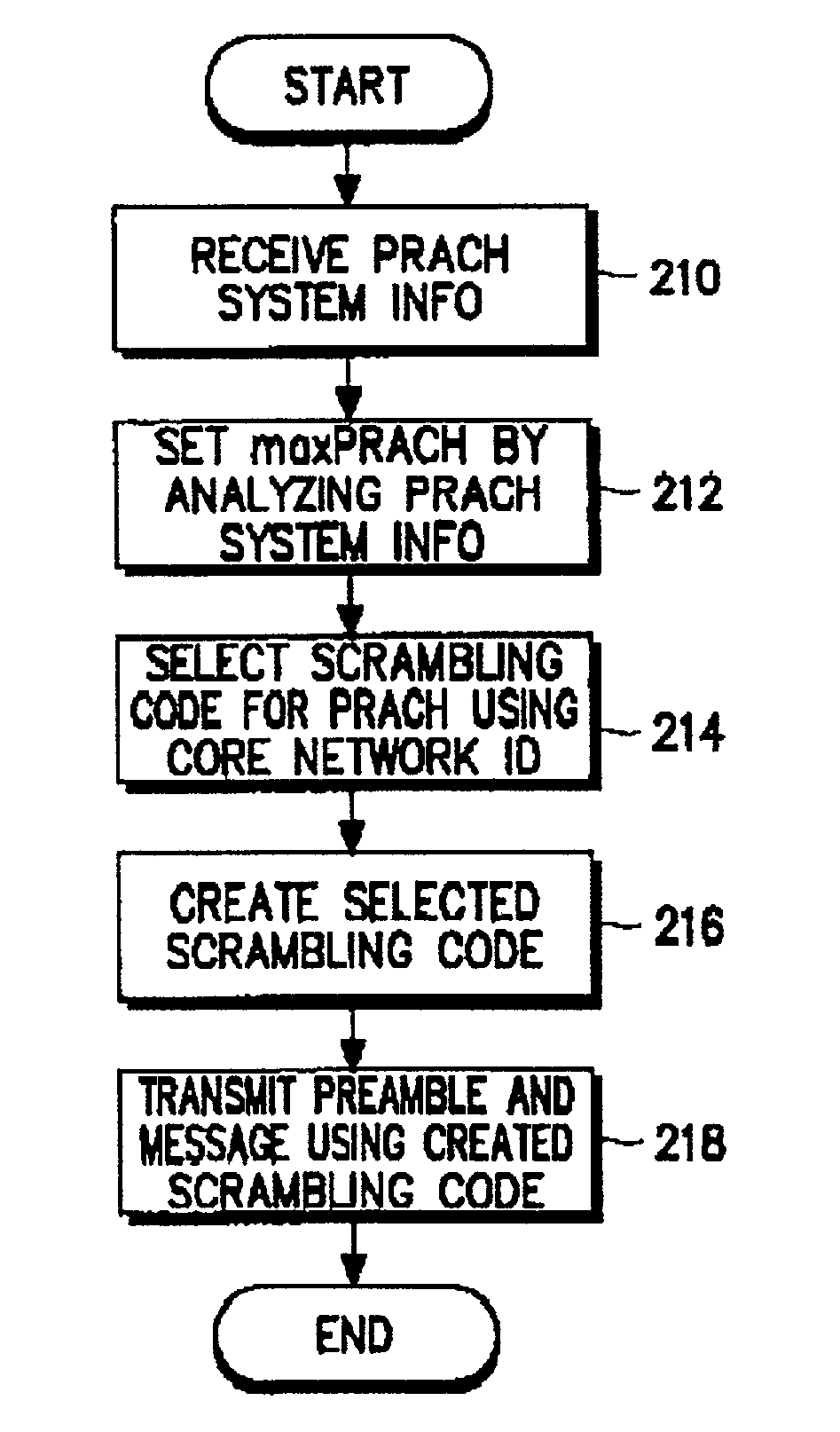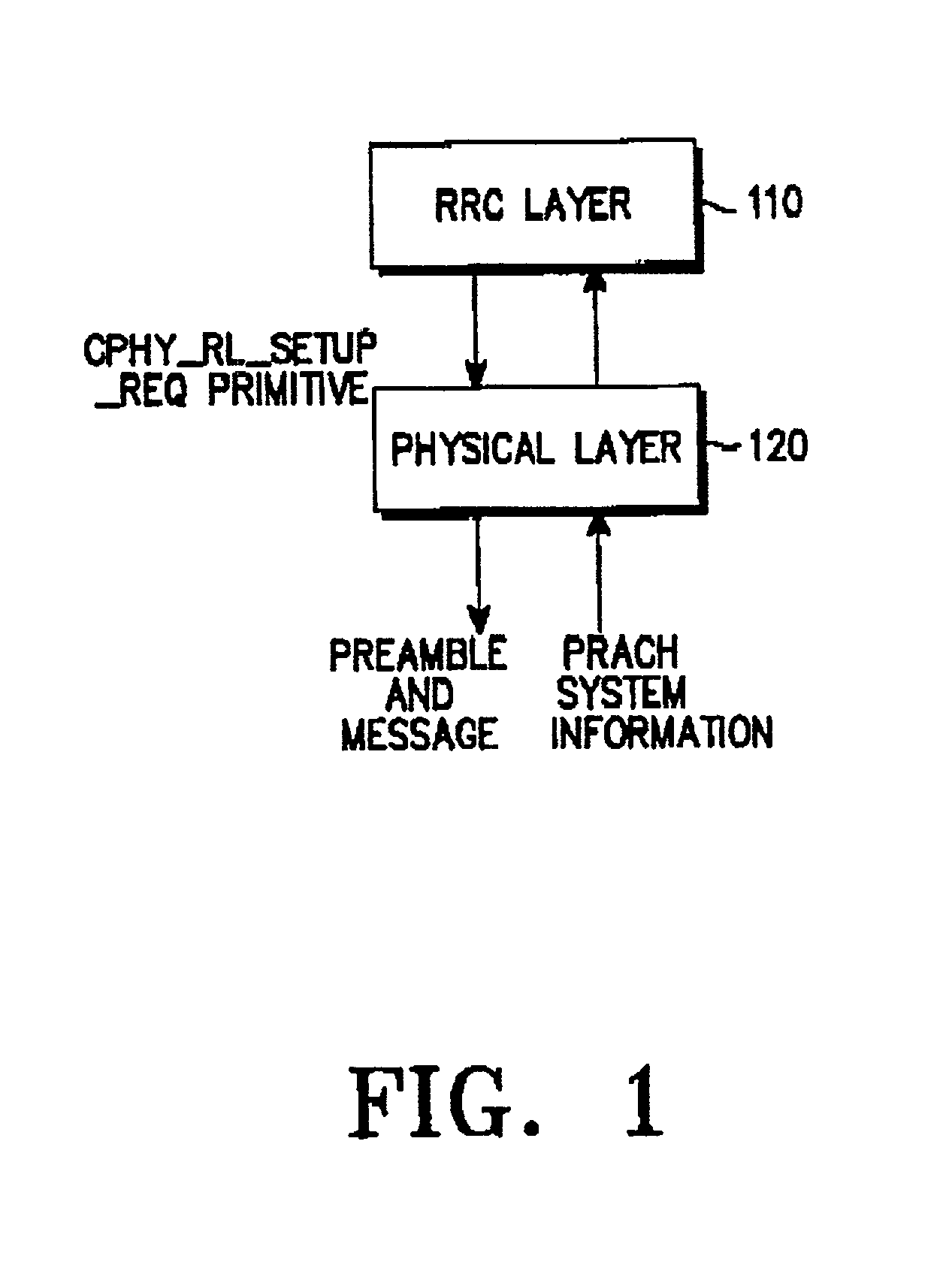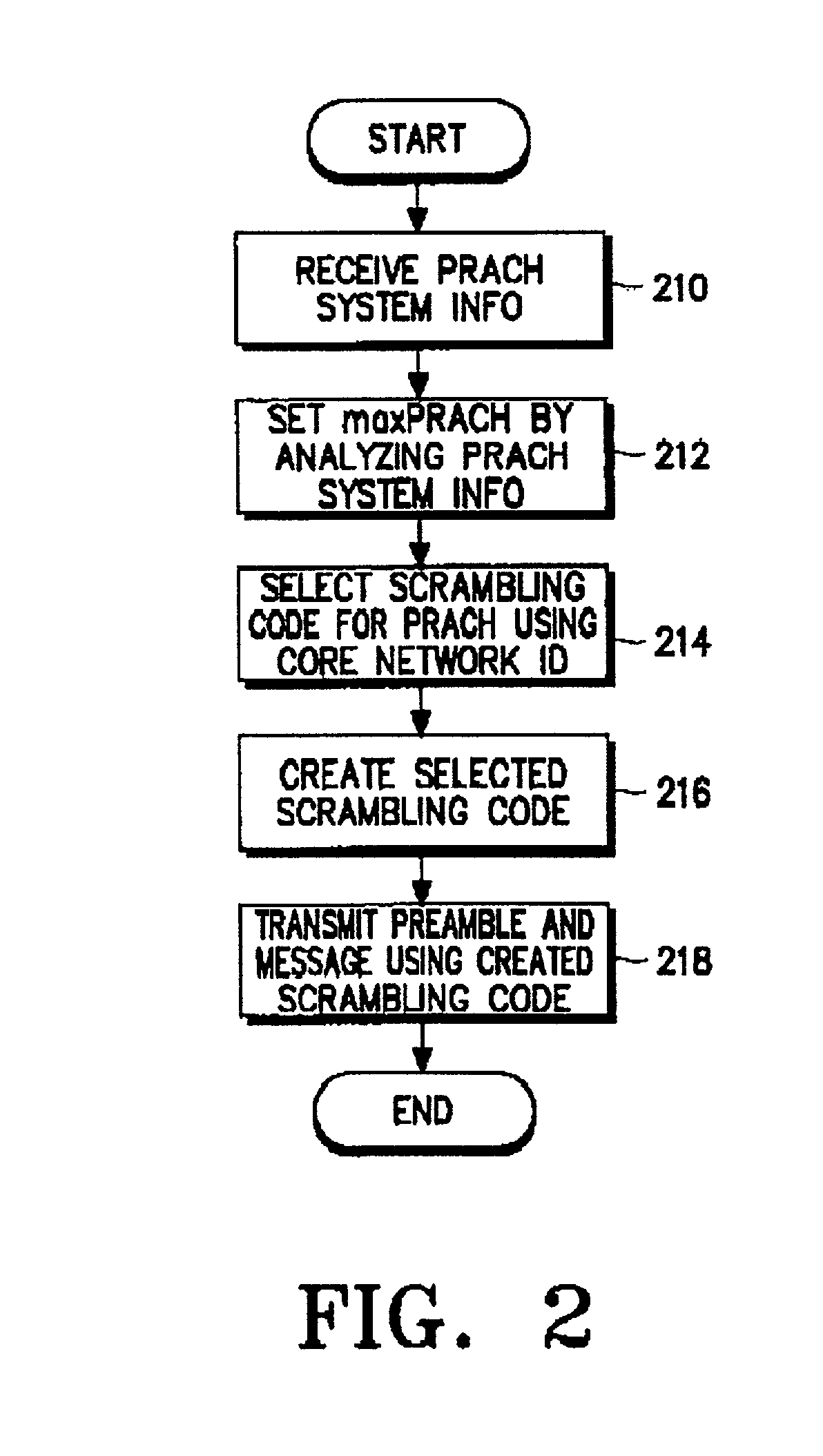Method for selecting RACH in a CDMA mobile communication system
a mobile communication system and channel assignment technology, applied in the field of random access channel assignment method in the cdma mobile communication system, can solve the problems of not specifically describing a plan, reducing the transmission success rate of rach messages, increasing the number, etc., and achieve the effect of minimizing collisions
- Summary
- Abstract
- Description
- Claims
- Application Information
AI Technical Summary
Benefits of technology
Problems solved by technology
Method used
Image
Examples
second embodiment
1. Second Embodiment
[0051]In order to set up a PRACH between the UE and the UTRAN, PRACH resources, i.e., an access slot and a preamble signature, must be defined. Such resources are used to efficiently utilize the RACH. The UE calculates a persistence value used for efficient access control, using a persistence level receive d through the RRC message, and uses the calculated persistence value as an access parameter. Here, the persistence level transmit to the UE is defined as an integer of from 1 to 8, and is broadcast with a system information block #5 (SIB#5).
[0052]The UTRAN transmits mapping information messages containing the persistence level and the PRACH together with the PRACH system information, in order to assign the PRACH according to the persistence level. Table 4 below shows a message format transmit to the UE by the UTRAN to embody the second embodiment.
[0053]
TABLE 4InformationElement / TypeSemanticsGroup NameNeedMultiand ReferenceDescriptionAccess ServiceMP1 to 8Class ...
third embodiment
2. Third Embodiment
[0055]An access attempt probability of the UE is determined according to a persistence level transmitted from the UTRAN to the UE. A decrease in the persistence level causes an increase in a probability that the UE will access the URAN through the RACH. Therefore, by controlling assignment and selection of a PRACH scrambling code using the persistence level, it is also possible to control an access success probability among UEs existing in one cell. That is, by increasing the number of available scrambling codes at a low persistence level and decreasing the number of available scrambling codes at a high persistence level, it is possible to decrease a PRACH collision probability among UEs with high priority, thereby guaranteeing a high access success probability. But, the collision probability among the UEs with low priority is increased causing a decrease in the access success probability, so that it is not possible to guarantee data transmission through the RACH ...
fourth embodiment
3. Fourth Embodiment
[0060]In this embodiment, selection of the scrambling code is performed in the MAC layer, not in the RRC layer.
[0061]The MAC layer receives the persistence value calculated in the RRC layer in accordance with Equation (3) below, and then performs a persistence test on the received persistence value.
Pi=2−(k−1) (3)
[0062]The persistence value calculated by Equation (3) is compared with a value R randomly generated for the persistence test. The randomly generated value R is determined to have a value (in increments of 0.1 unit) between 0 and 1, and accessibility is determined according to Condition (1) below.
[0063]Condition (1)
[0064]R≦Pi: Assignment Succeeded
[0065]R>Pi: Assignment Failed
[0066]It is noted from Condition (1) that the UE can start to access the RACH only when R≦Pi. A PRACH scrambling code used when the UE selects PRACH using the generated value R is determined in accordance with Equation (4) below.
PRACH#=(└R×8×maxPRACH┘) % maxPRACH (4)
[0067]In Equatio...
PUM
 Login to View More
Login to View More Abstract
Description
Claims
Application Information
 Login to View More
Login to View More - R&D
- Intellectual Property
- Life Sciences
- Materials
- Tech Scout
- Unparalleled Data Quality
- Higher Quality Content
- 60% Fewer Hallucinations
Browse by: Latest US Patents, China's latest patents, Technical Efficacy Thesaurus, Application Domain, Technology Topic, Popular Technical Reports.
© 2025 PatSnap. All rights reserved.Legal|Privacy policy|Modern Slavery Act Transparency Statement|Sitemap|About US| Contact US: help@patsnap.com



